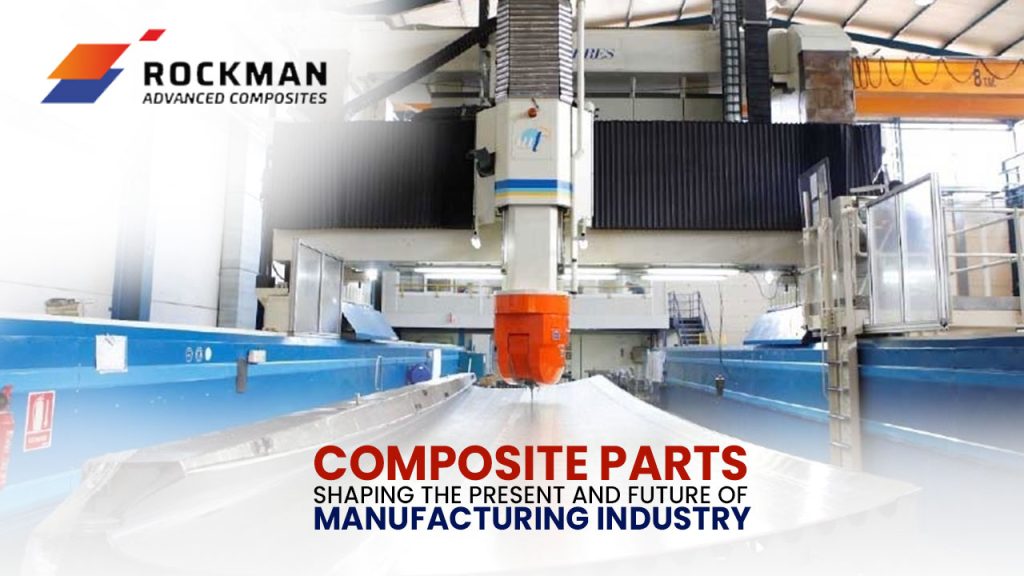With the manufacturing industry growing leap and bounds, composite parts have occurred as a keystone of innovation that will play a big role in the future of manufacturing. Known for their strength, lightweight, and versatility, composite parts are reshaping modern industries, from construction and infrastructure to sports and recreation. Due to their varied benefits and advantages composite parts are becoming a significant part of modern manufacturing. This material replaces traditional materials like steel and aluminium because this material improves the design process and end products across industries. With the costs of composite reducing and design flexibility improving, carbon composite materials and parts are opening up new design opportunities for engineers.
Strong and Lightweight Parts Ideal for High-Performance Applications
A Composite is a material made from combining two or more materials having different physical and chemical properties. The material produced from the combination of two or more materials has different characteristics. Composites are generally made by combining a matrix like metal, polymer, or ceramic along with reinforcement-like particles or fibers to provide additional strength. The CFRP or carbon fiber reinforced polymer is the most popular composite made by combining carbon fibers with a polymer matrix. This material is extremely strong yet light in weight and hence parts made with this material are ideal for various high-performance applications.
The Advantages of Composite Parts
The composite material is known for having high strength and specific stiffness, so this material provides better properties at low weight compared to conventional materials. This material even outperforms conventional materials in terms of weight, strength, and durability and is even more resistant to environmental factors.
High Strength-to-Weight Ratio – Composite parts are known for their exceptional strength-to-weight ratio, which makes them invaluable for the automotive and aerospace industries. These industries focus on reducing the weight of the vehicles and aircraft by using lightweight composite parts that serve their purpose without compromising strength which is vital for performance and fuel efficiency.
New and Innovative Design Options – Parts made of composites can have complex and innovative designs that otherwise are hard to achieve with other materials. This is mainly because composites can be easily moulded into complex shapes allowing manufacturers to design parts that improve the aesthetics and functionality of products.
Resistant to Corrosion – Modern-day manufacturers prefer parts made of composite materials because these materials are resistant to corrosion, unlike metals. This property of composite material makes them suitable for designing parts that have to sustain harsh weather conditions. This further extends the lifespan of products made from composite parts, thereby reducing maintenance costs.
Thermal and Electrical Insulation – Since composites offer excellent thermal and electrical insulation properties, parts made from composite materials can be ideally used in electrical and electronic applications.
The Future of Composite Parts
Composite materials in recent times are going through major advancements that will introduce different composite materials like nanocomposites, bio-based composites, smart composites, and hybrid composites. These are the materials of the future that are going to play a significant role in future innovations. Nanocomposites are composites in which nanoparticles are incorporated into the matrix that are usually less than 100 nanometers in size and enhance mechanical, thermal, and electrical properties. This composite will be used in the future to improve structural components’ durability to enhance electronic device performance. Bio-based composites are another future composite that will catch attention across the world with sustainability becoming a global priority. Made from bio-derived materials, this composite is a sustainable alternative to traditional composite, as it reduces environmental impact while maintaining desirable properties. Smart composite is another composite that is engineered with integrated innovative materials that allow it to sense, respond, and adapt to external conditions. This material will be in great demand in sectors like aerospace, where materials can autonomously adapt to changing conditions, enhancing safety and performance.
Summary
Composite parts are transforming the manufacturing landscape by offering products that are a combination of lightweight, strong, and versatile, properties that cannot be matched with traditional materials. With advancements in technology, the use of composite parts is set to grow, particularly with multiple composite materials in the pipeline that will surely drive innovation across various industries and shape the future of manufacturing.








